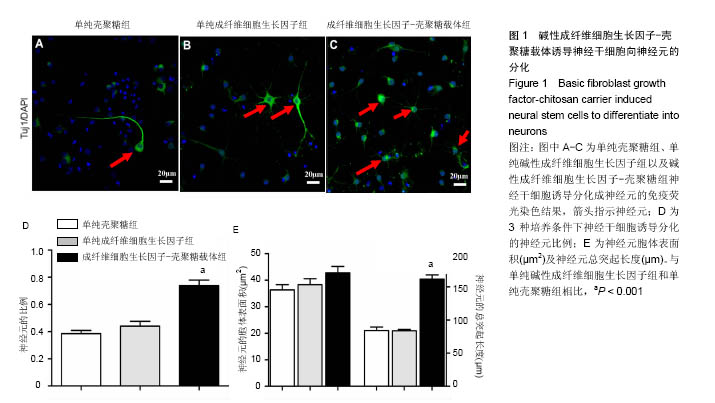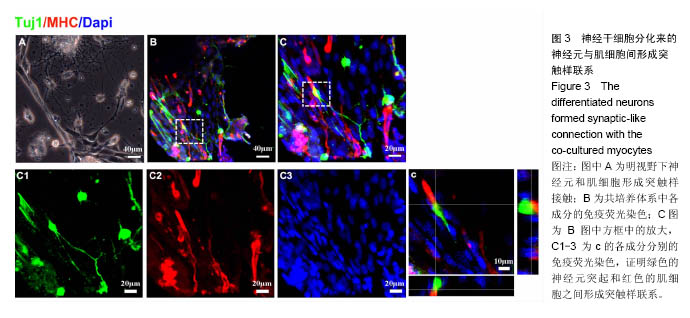| [1]Pinho AC, Fonseca AC, Serra AC, et al. Peripheral Nerve Regeneration: Current Status and New Strategies Using Polymeric Materials. Adv Healthc Mater. 2016;5(21): 2732-2744. [2]Johnson PJ, Wood MD, Moore AM, et al. Tissue engineered constructs for peripheral nerve surgery. Eur Surg. 2013;45(3). [3]Young W. Spinal cord regeneration. Cell Transplant. 2014; 23(4-5):573-611.[4]Silver J, Miller JH. Regeneration beyond the glial scar. Nat Rev Neurosci. 2004;5(2):146-156.[5]Anderson MA, Burda JE, Ren Y, et al. Astrocyte scar formation aids central nervous system axon regeneration. Nature. 2016;532(7598):195-200. [6]Liu K, Tedeschi A, Park KK, et al. Neuronal intrinsic mechanisms of axon regeneration. Annu Rev Neurosci. 2011;34:131-152.[7]Tam RY, Fuehrmann T, Mitrousis N, et al. Regenerative therapies for central nervous system diseases: a biomaterials approach. Neuropsychopharmacology. 2014; 39(1):169-188. [8]Yang Z, Zhang A, Duan H, et al. NT3-chitosan elicits robust endogenous neurogenesis to enable functional recovery after spinal cord injury. Proc Natl Acad Sci U S A. 2015;112(43): 13354-13359. [9]Duan H, Ge W, Zhang A, et al. Transcriptome analyses reveal molecular mechanisms underlying functional recovery after spinal cord injury. Proc Natl Acad Sci U S A. 2015;112(43): 13360-13365. [10]Palmer TD, Markakis EA, Willhoite AR, et al. Fibroblast growth factor-2 activates a latent neurogenic program in neural stem cells from diverse regions of the adult CNS. J Neurosci. 1999;19(19):8487-8497.[11]王聪,杨朝阳,段红梅,等.碱性成纤维细胞生长因子-壳聚糖载体诱导神经干细胞向神经元分化并形成突触的研究[J].中国康复理论与实验,2015,21(4):406-411.[12]段红梅,王聪,杨朝阳,等.碱性成纤维细胞生长因子-壳聚糖载体诱导神经干细胞向神经元分化的机制[J].中国康复理论与实践, 2016,22(5):528-534.[13]Guo X, Gonzalez M, Stancescu M, et al. Neuromuscular junction formation between human stem cell-derived motoneurons and human skeletal muscle in a defined system. Biomaterials. 2011;32(36):9602-9611.[14]Morimoto Y, Kato-Negishi M, Onoe H, et al. Three-dimensional neuron-muscle constructs with neuromuscular junctions. Biomaterials. 2013;34(37): 9413-9419. [15]Cameron HA, Woolley CS, McEwen BS, et al. Differentiation of newly born neurons and glia in the dentate gyrus of the adult rat. Neuroscience. 1993;56(2):337-344.[16]Margolis RK, Margolis RU. Nervous tissue proteoglycans. Experientia. 1993;49(5):429-446.[17]Arber S. Motor circuits in action: specification, connectivity, and function. Neuron. 2012;74(6):975-989. [18]Lemon RN. Descending pathways in motor control. Annu Rev Neurosci. 2008;31:195-218. [19]Canedo A. Primary motor cortex influences on the descending and ascending systems. Prog Neurobiol. 1997; 51(3):287-335.[20]Lemon RN, Kirkwood PA, Maier MA, et al. Direct and indirect pathways for corticospinal control of upper limb motoneurons in the primate. Prog Brain Res. 2004;143:263-279.[21]ten Donkelaar HJ. Development and regenerative capacity of descending supraspinal pathways in tetrapods: a comparative approach. Adv Anat Embryol Cell Biol. 2000; 154:iii-ix, 1-145.[22]Cheney PD, Fetz EE, Mewes K. Neural mechanisms underlying corticospinal and rubrospinal control of limb movements. Prog Brain Res. 1991;87:213-252.[23]Tripodi M, Arber S. Regulation of motor circuit assembly by spatial and temporal mechanisms. Curr Opin Neurobiol. 2012; 22(4):615-623. [24]Dasen JS. Transcriptional networks in the early development of sensory-motor circuits. Curr Top Dev Biol. 2009;87: 119-148. [25]McCrea DA. Supraspinal and segmental interactions. Can J Physiol Pharmacol. 1996;74(4):513-517.[26]Stein PS. Spinal cord circuits for motor pattern selection in the turtle. Ann N Y Acad Sci. 1989;563:1-10.[27]Pun S, Santos AF, Saxena S, et al. Selective vulnerability and pruning of phasic motoneuron axons in motoneuron disease alleviated by CNTF. Nat Neurosci. 2006;9(3):408-419.[28]Burns AS, Jawaid S, Zhong H, et al. Paralysis elicited by spinal cord injury evokes selective disassembly of neuromuscular synapses with and without terminal sprouting in ankle flexors of the adult rat. J Comp Neurol. 2007;500(1): 116-133.[29]Jablonka S, Dombert B, Asan E, et al. Mechanisms for axon maintenance and plasticity in motoneurons: alterations in motoneuron disease. J Anat. 2014;224(1):3-14. [30]Sendtner M, Dittrich F, Hughes RA, et al. Actions of CNTF and neurotrophins on degenerating motoneurons: preclinical studies and clinical implications. J Neurol Sci. 1994;124 Suppl:77-83.[31]Kang H, Tian L, Mikesh M, et al. Terminal Schwann cells participate in neuromuscular synapse remodeling during reinnervation following nerve injury. J Neurosci. 2014;34(18): 6323-6333.[32]Lee YI, Li Y, Mikesh M, et al. Neuregulin1 displayed on motor axons regulates terminal Schwann cell-mediated synapse elimination at developing neuromuscular junctions. Proc Natl Acad Sci U S A. 2016;113(4):E479-487. [33]De Winter F, Vo T, Stam FJ, et al. The expression of the chemorepellent Semaphorin 3A is selectively induced in terminal Schwann cells of a subset of neuromuscular synapses that display limited anatomical plasticity and enhanced vulnerability in motor neuron disease. Mol Cell Neurosci. 2006;32(1-2):102-117. [34]Ko CP, Chen L. Synaptic remodeling revealed by repeated in vivo observations and electron microscopy of identified frog neuromuscular junctions. J Neurosci. 1996;16(5):1780-1790. |
.jpg)



.jpg)